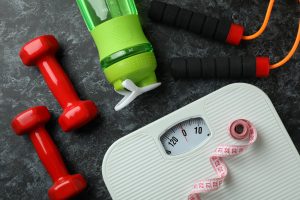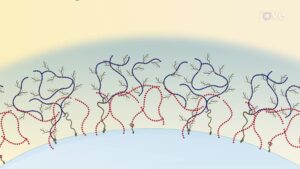Fast and Natural Relief for Lower Back Pain: What Actually Works
Understanding Acute Lower Back Pain
Lower back pain is one of the most common musculoskeletal complaints in the world, affecting up to 80% of people at some point in their lives. Often, the pain arises suddenly—after waking up, bending awkwardly, or sitting too long—and can make simple movements like walking or bending over feel impossible.
Acute lower back pain typically lasts less than four weeks and is most often caused by muscle strain, ligament sprains, or irritation in the spine’s surrounding tissues. Although the pain can be intense, it’s usually not serious and can be managed at home with the right approach.
Why Movement Is the First Line of Defense
While many assume that rest is the best treatment for acute back pain, inactivity can actually worsen symptoms. Research shows that early movement and return to normal activities are associated with faster recovery and better long-term outcomes.
Engaging in low-impact movement, particularly walking, helps reduce stiffness, promote circulation, and encourage muscular relaxation. Even brief 10–30 minute walks can make a significant difference by gently mobilizing the hips and lumbar spine.
“Motion is lotion” — movement helps loosen tight muscles and restore blood flow, speeding up the healing process for many back issues.
The Role of Heat Therapy in Muscle Relief
Heat therapy is a proven method for relieving pain and stiffness in muscles, especially when there’s no structural injury. Applying heat via a hot shower, warm compress, or steam room can increase blood flow to the affected region, helping relax spasms and reduce discomfort.
Wet heat, such as from a steam room or sauna, tends to penetrate more deeply into soft tissue compared to dry heat, making it particularly effective for larger muscle groups like the lower back.
However, if the pain is due to an actual injury involving inflammation, applying heat too soon can be counterproductive. In those cases, cold therapy may be more appropriate during the first 48–72 hours to reduce swelling before transitioning to heat.
Always consider the source of the pain. If it’s purely muscular tightness or spasm, heat is your ally. But if there’s swelling, bruising, or suspected tissue damage, caution is advised.
Effective Stretching and Gentle Back Extensions
One of the simplest and safest exercises for acute lower back discomfort is the prone press-up, often referred to as the “cobra stretch.” To perform this:
- Lie face down with your hands positioned under your shoulders.
- Gently press your upper body upward, keeping hips on the ground.
- Hold for a few seconds and return to the starting position.
- Repeat 5–10 times, using a slow and controlled motion.
This exercise promotes extension in the lower spine and acts as a pumping mechanism to flush out stiffness and tension in the lumbar area. It’s also a passive stretch that doesn’t require full core engagement, making it accessible even in pain.
Other light mobility work—such as pelvic tilts, cat-cow stretches, or gentle hip circles—can also help promote range of motion and muscle balance.
Focused Shockwave Therapy: A Deeper Solution
For muscle spasms that don’t resolve with movement and heat, focused shockwave therapy has emerged as a powerful non-invasive option. Unlike superficial radial shockwave devices, focused shockwave penetrates deep into tissue to:
- Break up tight muscle fibers
- Promote healing via increased circulation
- Reduce inflammation
This therapy uses high-frequency sound waves delivered to a precise point of tension or spasm. It’s commonly used in sports medicine, physical therapy, and rehab clinics worldwide.
One randomized clinical study demonstrated that focused shockwave therapy was more effective than conventional treatment for reducing pain and improving function in patients with chronic lower back pain. Although the study focused on long-term pain, similar mechanisms apply to acute muscle spasms.
How to Find a Provider
If you’re considering this treatment, search for providers offering “focused shockwave therapy” rather than “radial.” Ask clinics directly which technology they use to ensure you’re getting the deeper-penetrating version shown to be more effective.
Try search terms like “focused shockwave therapy near me” or include your city or region to narrow results. Many chiropractors, physical therapists, and sports rehab centers offer this therapy—just verify the equipment and technique before booking.
When Not to Use These Methods
While walking, stretching, and heat work well for most muscle-based pain, these methods may not be suitable if you have:
- Shooting pain into the legs or feet (possible nerve impingement)
- Loss of bladder or bowel control
- Severe trauma, swelling, or bruising
- History of spinal fractures, infections, or tumors
In such cases, consult a medical provider immediately to rule out more serious conditions such as herniated discs, sciatica, or spinal cord compression. Imaging tests (e.g., MRI, CT scans) may be necessary for a clear diagnosis.
Conclusion: Building a Personalized Relief Strategy
The best approach to fast lower back pain relief is to combine multiple modalities based on your unique symptoms. For muscle-related pain, the strategy may include:
- Initiating light movement, especially walking
- Using heat therapy to relax spasms (as long as no injury is present)
- Applying gentle stretching techniques like prone press-ups
- Exploring focused shockwave therapy for deeper or stubborn issues
Remember, consistency matters. These strategies are most effective when applied early and regularly during the first few days of acute discomfort. By staying mobile, using targeted relief techniques, and knowing when to escalate to professional care, you can often reduce or eliminate back pain quickly and safely.
Video Summary
For more evidence-based nutrition and fitness tips, subscribe to our channel: https://www.youtube.com/@Vitality-and-Wellness
Looking for extra help with your fitness goals? Check out the personalized Nutrition Program at Parkway Athletic Club: parkwayathleticclub.com/nutrition
Disclaimer: This content is for educational purposes and does not replace personalized medical advice.



